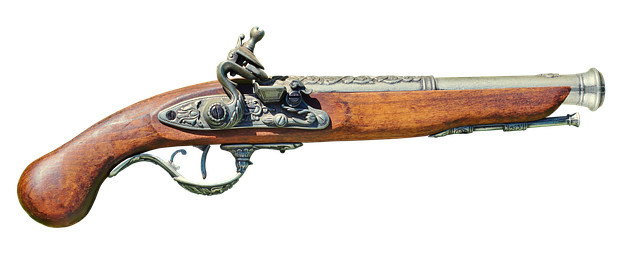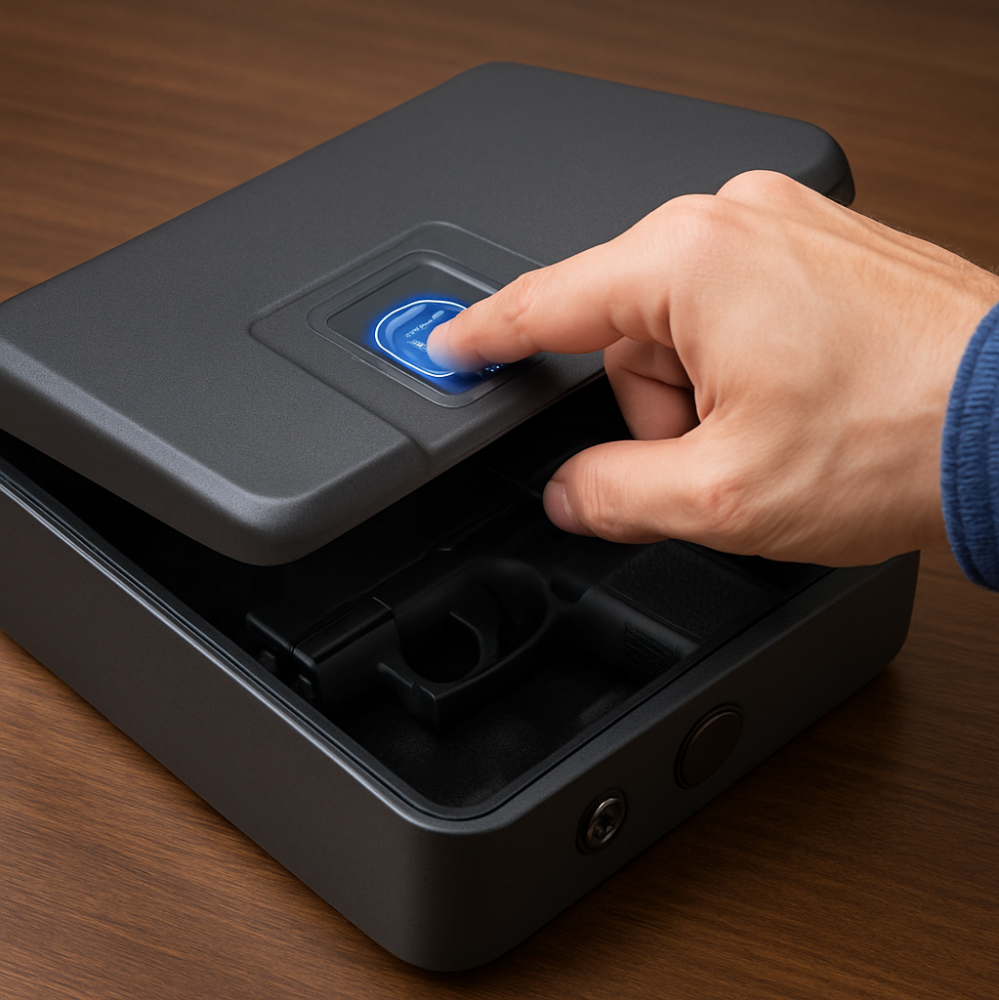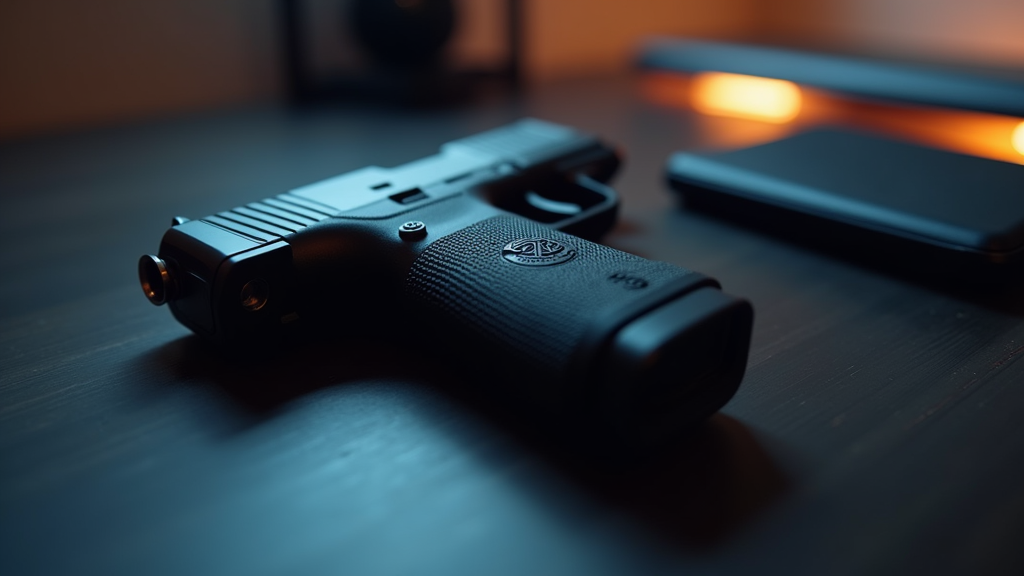How to Clean a Muzzleloader
Introduction
When it comes to firearms, few possess the historical charm and nostalgic appeal quite like a muzzleloader. These traditional firearms, dating back centuries, hold a special place in the hearts of shooting enthusiasts and collectors alike.
But beyond their captivating allure lies a crucial responsibility: proper cleaning and maintenance. In this article, we delve into the safest method to clean a muzzleloader, considering its unique characteristics and the need to preserve its performance.
Before we embark on this journey, let us first explore what exactly a muzzleloader is, delve into its intriguing history, and emphasize the importance of meticulous upkeep to ensure both safety and longevity.
1. What is a Muzzleloader?
A muzzleloader is a type of firearm that is loaded from the muzzle, or the open end of the gun’s barrel. Unlike modern firearms that use cartridges or magazines to hold preloaded ammunition, muzzleloaders require the shooter to manually load the projectile, propellant (such as black powder or a substitute), and ignition source (such as a percussion cap or a flintlock mechanism) directly into the barrel.
The term “muzzleloader” originates from the fact that the shooter inserts the ammunition through the muzzle of the barrel. Once loaded, the firearm is typically discharged by igniting the propellant, which creates pressure and propels the projectile out of the barrel.
Muzzleloaders have a rich history and were widely used before the advent of cartridge-based firearms. They played a significant role in various historical events, such as colonial America, the American Revolution, and the fur trade era. Today, muzzleloaders are cherished by enthusiasts who appreciate the craftsmanship and the traditional shooting experience they offer.
Due to their unique loading process and the use of black powder or black powder substitutes, muzzleloaders require specific cleaning and maintenance procedures to ensure safe and reliable operation. Proper care is crucial to prevent fouling, corrosion, and other issues that may affect performance and safety.
Here is a site that gives an Introduction to Muzzleloading Firearms for more information on muzzleloaders.
2. What is the History of a Muzzleloader?
The history of muzzleloaders spans centuries and is intertwined with the development of firearms themselves. Here’s a brief overview of their historical significance:
Early Development
Muzzleloaders can be traced back to the 14th century when the first portable firearms emerged. These early muzzleloaders, known as hand cannons, were essentially metal tubes that held gunpowder and a projectile. Ignition was achieved by applying a flame to the gunpowder through the muzzle.
Matchlock Era
In the 15th century, the matchlock mechanism was introduced, revolutionizing firearms. This mechanism involved a burning match or slow-burning rope that was used to ignite the gunpowder. Matchlock muzzleloaders were widely used in conflicts like the European Wars of the 16th and 17th centuries.
Flintlock Era
The 17th and 18th centuries saw the rise of flintlock muzzleloaders. These firearms used a piece of flint attached to a hammer that struck a steel plate (frizzen), creating sparks that ignited the priming powder in the flash pan. The flame then traveled from the flash pan into the barrel, igniting the main charge of gunpowder and propelling the projectile forward. Flintlock muzzleloaders were commonly used by military forces and civilians during the American Revolutionary War and Napoleonic Wars.
Percussion Era
The percussion era, which began in the early 19th century, brought about a significant improvement in ignition systems for muzzleloaders. Instead of relying on flint striking steel, percussion muzzleloaders used a percussion cap—a small metal cap containing a volatile compound that could be easily ignited by a blow from the hammer. This eliminated the need for a flint and provided more reliable ignition.
Modern Muzzleloaders

In recent times, modern muzzleloaders have gained popularity among shooting enthusiasts and hunters. These firearms often feature improved designs, materials, and ignition systems. Many modern muzzleloaders use specially designed sabots or sabot-like projectiles that offer increased accuracy and range.
3. What is the Importance of Proper Cleaning and Maintenance for Safety and Longevity?
Proper cleaning and maintenance are vital for the safety, performance, and longevity of any firearm, including muzzleloaders. Here are a few reasons why meticulous upkeep is essential:
Safety
Regular cleaning helps ensure the safe operation of a muzzleloader. Black powder and its substitutes, such as Pyrodex or Triple Seven, leave behind fouling and residue that can accumulate over time. This buildup can obstruct the barrel, affect accuracy, and potentially lead to dangerous situations. Thoroughly cleaning the muzzleloader reduces the risk of malfunctions, misfires, or barrel obstructions.
Performance
A clean muzzleloader is a reliable muzzleloader. Residue from firing can affect the consistency and accuracy of subsequent shots. By removing fouling and residue, you can maintain consistent performance, trajectory, and bullet placement. This is particularly important for hunters who rely on the muzzleloader’s accuracy to make ethical and effective shots.
Longevity
Proper cleaning and maintenance can significantly extend the lifespan of a muzzleloader. Black powder residue is corrosive and can damage the barrel if left uncleaned. Additionally, moisture and other environmental factors can lead to rust and deterioration. By regularly cleaning, oiling, and protecting the muzzleloader, you can preserve its condition, functionality, and value.
4. Understanding the Basics of Muzzleloader Cleaning
Before diving into the step-by-step guide, it’s essential to familiarize yourself with the basic components of a muzzleloader, common fouling and residue, and the tools and supplies you’ll need for cleaning.
4.1 What are the Components of a Muzzleloader?
A muzzleloader typically consists of the following components:
- Barrel: The long, cylindrical tube through which the projectile is propelled.
- Breech or Lock: The rear part of the barrel where the ignition system is located.
- Stock: The wooden or synthetic handle and shoulder support of the muzzleloader.
- Ramrod: A long rod used for loading and cleaning the muzzleloader.
- Ignition System: Depending on the type of muzzleloader, it can be a percussion cap, a flintlock mechanism, or an inline ignition system.
- Nipple or Touch Hole: The small hole through which the ignition source reaches the main charge.
Understanding these components will help you navigate the cleaning process more effectively.
4.2 Common Fouling and Residue in Muzzleloaders
When firing a muzzleloader, fouling and residue can accumulate in different parts of the firearm. The primary types of fouling you may encounter include:
- Powder Residue: Black powder or black powder substitute residue can accumulate in the barrel, breech area, and ignition system. It often appears as a fine, dark powder.
- Copper Fouling: If you’re using copper-jacketed bullets or sabots with copper coatings, copper fouling may occur. This greenish-blue residue forms as copper is deposited in the barrel bore.
- Lead Fouling: When using lead projectiles, lead fouling can build up in the barrel. It appears as a grayish or blackish deposit.
Being aware of the types of fouling and residue will help you choose appropriate cleaning techniques and solvents.
4.3 Tools and Supplies for Muzzleloader Cleaning
To properly clean a muzzleloader, you’ll need the following tools and supplies:
- Cleaning Rod: A long rod with a handle, typically made of wood, fiberglass, or steel. It is used for pushing cleaning patches, brushes, and jags through the barrel.
- Cleaning Patches: Fabric patches that attach to the cleaning rod and are used to remove fouling and residue from the barrel. They come in various sizes to match the bore diameter.
- Bore Brush: A brush with stiff bristles designed to scrub the barrel and remove fouling. Bore brushes are caliber-specific and should match the diameter of your muzzleloader’s bore.
- Jag: A solid attachment for the cleaning rod that holds the cleaning patch. It fits snugly into the bore and pushes the patch through the barrel.
- Solvent: A cleaning solution specifically formulated for muzzleloaders. Solvents help dissolve fouling and residue and make them easier to remove.
- Lubricant: A lubricating oil or grease used to protect the metal surfaces of the muzzleloader and prevent rust.
- Bore Light: A small, portable light source to inspect the barrel’s interior for fouling or damage.
These tools and supplies will assist you in effectively cleaning your muzzleloader.
4.4 Step-by-Step Guide to Cleaning a Muzzleloader
Note: The following steps provide a general guideline for cleaning a muzzleloader. Always refer to the manufacturer’s instructions for your specific muzzleloader model and any recommended cleaning techniques.
Here’s a step-by-step guide to cleaning a muzzleloader:
- Ensure the muzzleloader is unloaded and remove the percussion cap or primer, if applicable. Double-check that there is no powder or projectile in the barrel.
- Disassemble the muzzleloader as much as necessary for cleaning. This typically involves removing the barrel, breech plug or nipple, and any other easily removable parts.
- Prepare your cleaning rod by attaching the appropriate cleaning patch, jag, or bore brush. Moisten the patch or brush with solvent, ensuring it’s not overly saturated.
- Insert the cleaning rod into the muzzle end of the barrel, with the patch or brush attached. Push the cleaning rod through the barrel until it exits the other end. Avoid forcing it through; a gentle back-and-forth motion may be necessary to dislodge fouling.
- Repeat the cleaning process with fresh patches or brushes until they come out relatively clean. This may require several passes, especially if there is heavy fouling.
- Inspect the barrel’s interior with a bore light to ensure all fouling and residue have been removed. Look for any signs of damage, such as pitting or corrosion.
- Clean the breech plug or nipple using a small brush and solvent. Pay attention to the threads and ensure all fouling is removed.
- Wipe down all other metal parts of the muzzleloader with a clean cloth or patches soaked in solvent. Remove any visible residue or debris.
- Apply a thin layer of lubricant to the barrel’s interior and exterior, as well as other metal surfaces. This will help protect against rust and corrosion.
- Reassemble the muzzleloader, following the manufacturer’s instructions and ensuring all parts are securely in place.
- Store the muzzleloader in a clean and dry location, preferably in a gun safe or case, to protect it from moisture and other environmental factors.
Remember to always follow proper safety procedures when cleaning and handling firearms. If you have any doubts or questions, consult a knowledgeable gunsmith or the manufacturer for guidance specific to your muzzleloader.
FAQ
What should you use to clean your muzzleloader?
You should use a combination of cleaning tools and supplies specifically designed for muzzleloaders, such as a cleaning rod, patches, solvent, lubricant, and brushes. It’s important to follow the manufacturer’s recommendations for the appropriate cleaning products.
How often should a muzzleloader be cleaned?
The frequency of cleaning depends on the usage and conditions, but a general guideline is to clean your muzzleloader after every shooting session or at least once a month if it’s not being used. Regular cleaning helps maintain its performance and prevents corrosion.
Should I oil the inside of my muzzleloader barrel?
No, you should avoid oiling the inside of the muzzleloader barrel. Applying oil inside the barrel can mix with the propellant or primer and potentially create an unsafe condition. Instead, focus on cleaning the barrel thoroughly and applying a light coat of rust preventive oil to the exterior metal surfaces.
Can I use regular gun cleaner on a muzzleloader?
While some gun cleaners can be used on muzzleloaders, it’s recommended to use cleaning products specifically designed for muzzleloaders. Regular gun cleaners may not be formulated to handle the unique residues and fouling produced by black powder or black powder substitutes.
Is it OK to dry fire a muzzleloader?
No, dry firing a muzzleloader can cause damage to the firing mechanism. Always ensure that the muzzleloader is loaded with the appropriate charge and projectile before firing. Dry firing without a load can cause the firing pin or nipple to strike the breech plug or barrel directly, potentially leading to damage.
Should you unload your muzzleloader every day?
It’s generally a good practice to unload your muzzleloader at the end of each day when you’re finished shooting or hunting. Unloading helps prevent accidents and ensures the firearm is in a safe condition. Store the unloaded muzzleloader and ammunition separately in accordance with local regulations.
What should you not do with a muzzleloader?
Avoid using smokeless powder or any other type of propellant not recommended by the manufacturer. Also, do not neglect proper cleaning and maintenance, as it can lead to malfunctions or reduced performance. Finally, always follow safety guidelines and treat your muzzleloader with the same respect as any other firearm.
What powder should be used in a muzzleloader?
The specific type and amount of powder to use in a muzzleloader depends on the model and the manufacturer’s recommendations. Generally, muzzleloaders use black powder or black powder substitutes such as Pyrodex or Triple Seven. Follow the manufacturer’s instructions and load data to ensure safe and effective performance.
Related Topics:




Leave a Reply